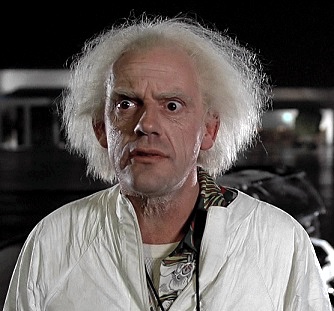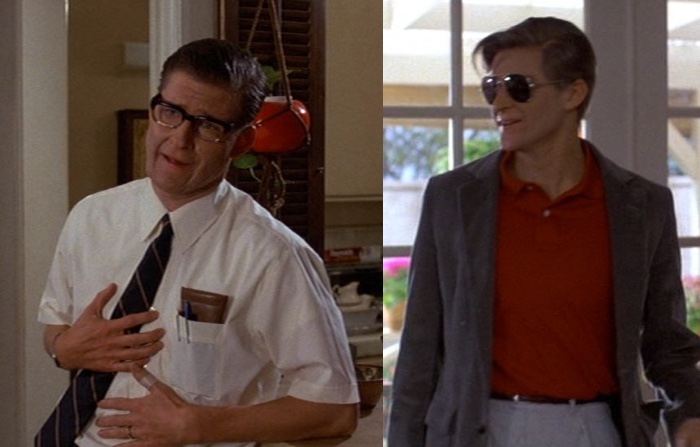This is the fifth article in the Back to the Future theme week series. Contains spoilers for the first film.
 Common writing advice is to always avoid clichés, but that's too simplistic to accept as a universal rule. Clichés and sterotypes serve to support another advice: Show, don't tell.
Common writing advice is to always avoid clichés, but that's too simplistic to accept as a universal rule. Clichés and sterotypes serve to support another advice: Show, don't tell.
The main purpose of stereotypes in narrative is to establish character archetypes that are already familiar to the readers or viewers. Take, for example, the character of Doc Brown from the Back to the Future films. The "crazy wild eyed scientist" look immediately communicates a lot of information about the role of this character. We can expect some advanced, perhaps slightly humorous, and possibly dangerous inventions.
At the beginning of the first film, Marty's father George is portrayed as a stereotypical loser. He has a bad posture, a greasy haircut, and a pocket protector. At the end of the film, when Marty returns to his own time, he notices that his actions in the past have inadvertently changed his family. George is no longer the pushover he used to be. Beating Biff in the past gave him a boost in confidence which changed the course of his life permanently. He wears stylish clothing and a neat haircut. The slouch is gone.

Left: "I'm just not very good at confrontations."
Right: "Now Biff, don't con me!"
The scene when Marty returns home and discovers the change in his family is almost purely show-don't-tell. At no point is it explained what's happened, the viewers are given more than enough clues to come to the right conclusion themselves.
The portrayal of new George wasn't completely successful, though. Outside USA George's appearance wasn't as easily recognized as the stereotype of a successful person. In mid-80s the yuppie stereotype had just reached its peak in popular culture but it was largely America-specific at that point. While the change of appearance of Marty's home and family members can't easily be misinterpreted, some nuances were lost to audiences in other cultures. Especially confusing to European viewers was why Marty's parents are carrying tennis rackets: the "rich people play tennis" stereotype is distinctly anglospheric.
This shows that stereotypes are culture-specific and that they change over time. They apply only for a relatively short period. In Back to the Future part III the 1955 version of Doc Brown chooses clothes for Marty to wear for his trip to 1885. Doc's perception of cowboy clothing seems to be colored by rodeos and early westerns, and even the 30 years older version of himself recognizes the outdated cliché.

"I dunno, are you sure this stuff is authentic?"
Drawing conclusions from these precedences, good use for clichés and stereotypes is when you want to establish a well known archetype. It's still good to remember that stereotypes are dependent on culture and time, so their meaning might be lost on some of the audience. Bad use of stereotypes is if the reason for applying them is "for laughs" or because "that's how they all are". When they're done well, clichés can be used as a powerful authorial tool.